Artist-run platforms and initiatives in Brussels and Flanders face a growing set of challenges. UFO, a collaboration between six artist-centred organisations across the two regions, is trying to improve the situation. The questions is, how? Ezra Babski headed to Brussels during the first-ever UFO visitors program, which took place in late March, to find out.
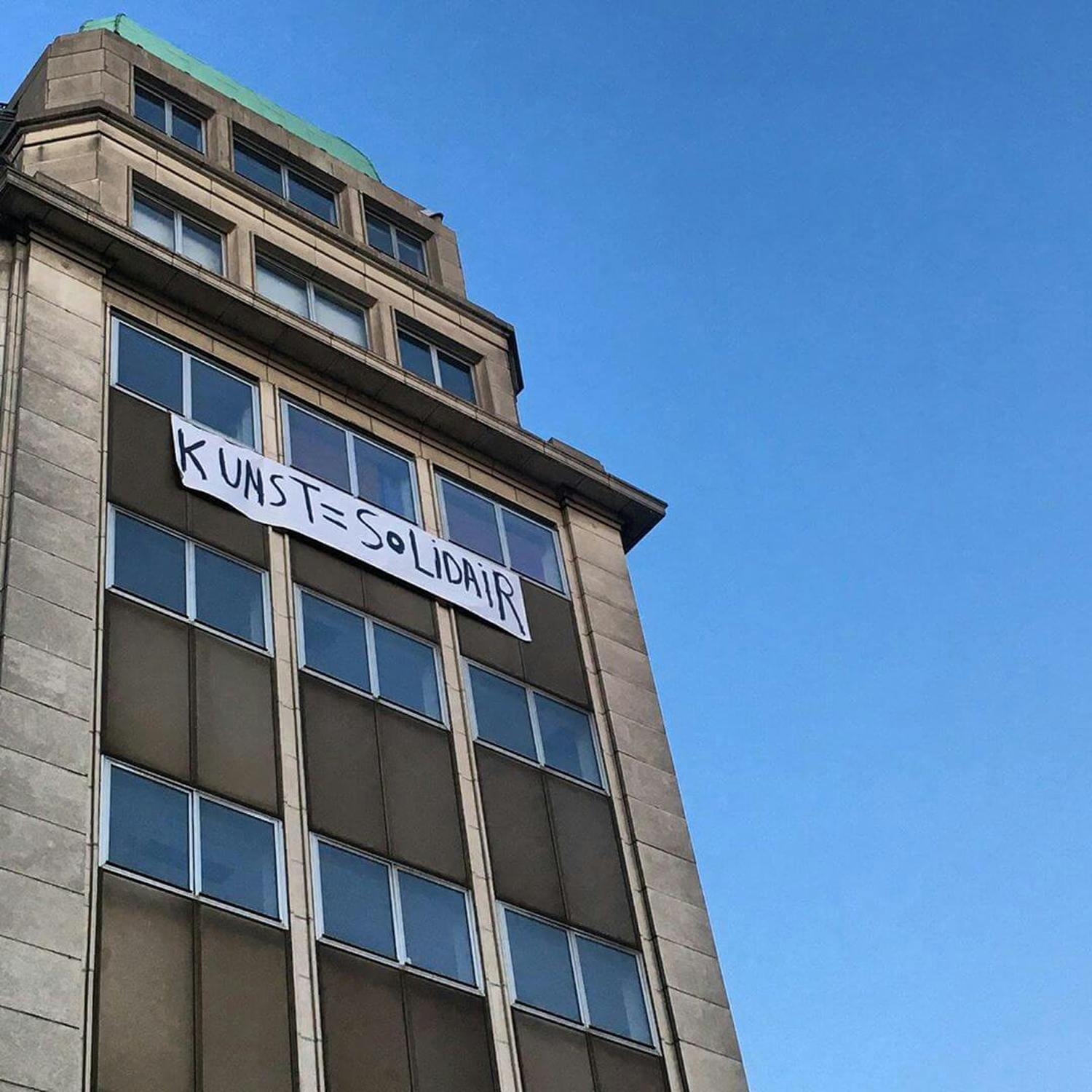
In the cities, artists are struggling to meet a growing crisis of means. A combination of factors – the pandemic, a conservative Flemish government and rising real estate prices – have pushed artists and cultural workers into a corner, as the battle to secure affordable studio and living space intensifies. On top of this, shrinking vacancy periods for unoccupied dwellings (an essential source of affordable studio spaces) and the increasing privatisation of public real estate threaten to drive out established organisations. Yet this desperate state of affairs has also galvanised the sector. Transregional collectives such as UFO have emerged as a bridge between institutions large and small. The situation might even have the potential to unleash a wave of solidarity among actors who, for lack of resources or time, have long had to tough it out on their own. Is it time to get organised?
The tour
Brussels, Place de la Bourse. On a sunny afternoon in late March, I set off on a bike tour to sample the city’s vibrant independent art scene. The tour, plus a roundtable discussion planned for the next day, were part of the first-ever UFO visitors' programme, designed to introduce ‘international professionals to support and development formats for (young) artists in Flanders’ and encourage cross-institutional exchange. Our group consisted of international guest curators as well as representatives from Level Five and Flanders Art Institute. The theme of the weekend: infrastructures of care and support.
The organisation behind the event was UFO, a strategic alliance of six major artist platforms in Flanders and Brussels: Cas-co (Leuven), Level Five (Brussels), De Tank (The Entrepot, Bruges), MORPHO (Antwerp), NUCLEO (Ghent) and Vonk (Hasselt-Genk). Its existence represents a milestone in the (self-)organisation of artist platforms in Belgium.
But what was the situation like on the ground? I was eager to get a closer look, ask questions and listen to what organisers and cultural workers alike had to say. How were they adapting to a post-pandemic world? What was their vision for the future? How were they approaching issues of sustainability, infrastructure and care?
With these questions in mind, I followed our guides as we cycled our way up to the Quartier des Quais, international group of curators in tow. Our first destination: nadine.
nadine – Hub for the wandering arts
Nadine has existed for 22 years as a ‘laboratory for contemporary transdisciplinary arts'. Located in the pleasant Rue de Pont Neuf, the space is currently run by a small team consisting of Loes Jacobs, An Goovaerts and Phyllis Dierick. Over the years, it has become a crucial place for ephemeral, experiential and performance-based artistic research, often involving interventions in public space. Although residencies, workshops and research projects are still the cornerstone of the programme, nadine also organises the Wandering Arts Biennial, a ‘critical biennial’ that focuses on nomadic art projects (the fourth edition of the WAB took place last year).
Around the corner is n0dine, nadine’s small exhibition venue. During our visit, preparations were underway for an upcoming group show, titled PRÉ-AVIS. Participating artists had been invited to take part in a specific kind of ‘game’: each would make a work that would, in some way, predict the outcome of the next round of cultural subsidies in Flanders.
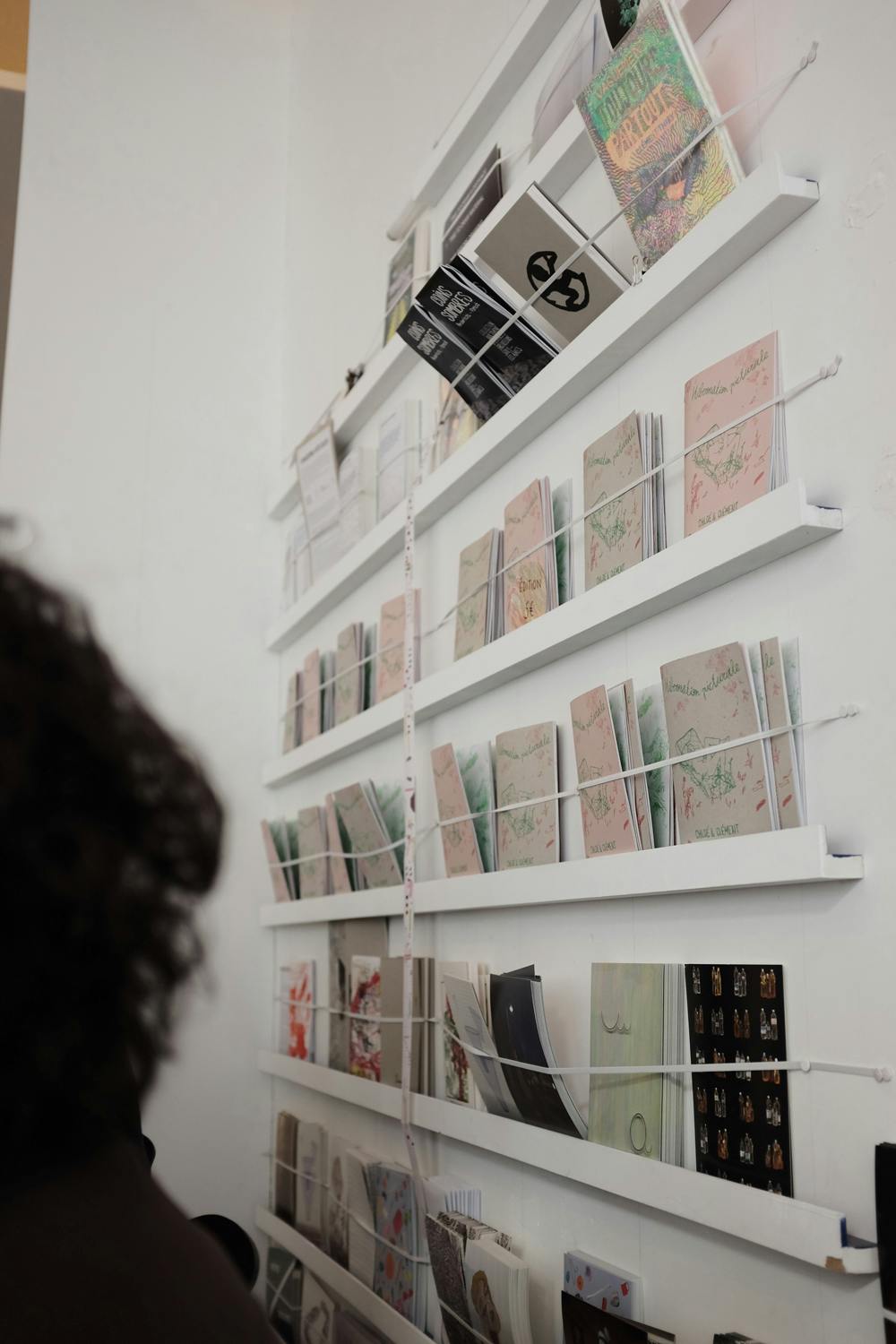
A big part of nadine’s programme involves helping artists secure various forms of funding. Sadly, a consensus among players in the sector dictates that cuts are on the way. For the numerous organisations that submitted an application for ‘structural funding’ last year, the outcome will determine their funding status for the next five years. Needless to say, tensions are high. As the exhibition pamphlet for PRE-AVIS makes clear, the future of the Flemish and Brussels art scenes hangs in the balance. (On April 1, the Flemish government issued its preliminary advice for subsidies for the cultural sector. According to interest group Overleg Kunstorganisaties, one in four cultural houses are in danger of losing funding.)
rile* – Experimental publishing meets performance
Given the unreliability of governmental funding, some artist-run spaces have sought other ways to nurture infrastructures of support. Rile*, located in the Rue des Commerçants, just a couple of blocks away from nadine, shares a building with the argos centre for audiovisual arts. The support rile* receives from the latter makes it possible for owners Sven Dehens and Chloe Chignell to run the platform freely without being wholly dependent on external funding.
Rile* is a special kind of space. More than just an independent bookshop – its selection is one of the most eclectic in Brussels, ranging from artist editions to cutting-edge theory and fiction –, it is also a project space and publication platform. Its commitment to amplifying underrepresented voices extends to its podcast series, which exists on its website alongside the rile reading room* (the latter serves as an ‘online space for textual companionship’).
Dehens and Chignell conceived rile* in a studio at Level Five; when the opportunity arose to occupy a larger space in the argos building, they moved. Yet this kind of cohabitation can come with its own set of challenges. In the words of Dehens and Chignell: 'It's a fine balance between exhausting the relations that we depend upon, as well as ourselves, and staying active. We want to be able to provide good conditions for artists and their work as well as paying the people involved in running the project.' Yet 'the resources, not only financial but in terms of energy and emotional expenditure, are not infinite… There are so many different factors that produce precarity… it's something we deal with and try to mitigate on a daily basis’. In other words, the precarity spaces like rile* are dealing with is both systemic and overdetermined.

Komplot – Nomadic curatorial collective
Other initiatives have adopted a nomadic approach. Although nomadism can gesture towards a fluid mode of organisation, it also functions as a safeguard, ensuring a space’s continued existence beyond the physical locations it occupies.
Komplot – the third stop on our tour – was founded in 2002 by Sonia Dermience as a 'nomadic curatorial collective', with the aim of supporting emerging artists, curators, and collectives. Since last year, the space has been in the hands of a dynamic trio consisting of Michèle Rossignol, Natalia Barczynska and Koi Persyn.
Since their move to a suburb of Anderlecht in 2018, Komplot have ramped up their social engagement with the local community. They maintain a kind of open-door policy at their office: locals are invited to stop by, start a conversation or take a rest. During Art Brussels, Komplot also organises an alternative art fair called Art Anderlecht, during which they reach out to artists, graphic designers and studio collectives from the municipality, making use of gardens and public spaces in the neighborhood. Another recent initiative, KIDS4KIDS, involves inviting a group of children ages six to ten to occupy Komplot’s space and build an exhibition from the ground up.
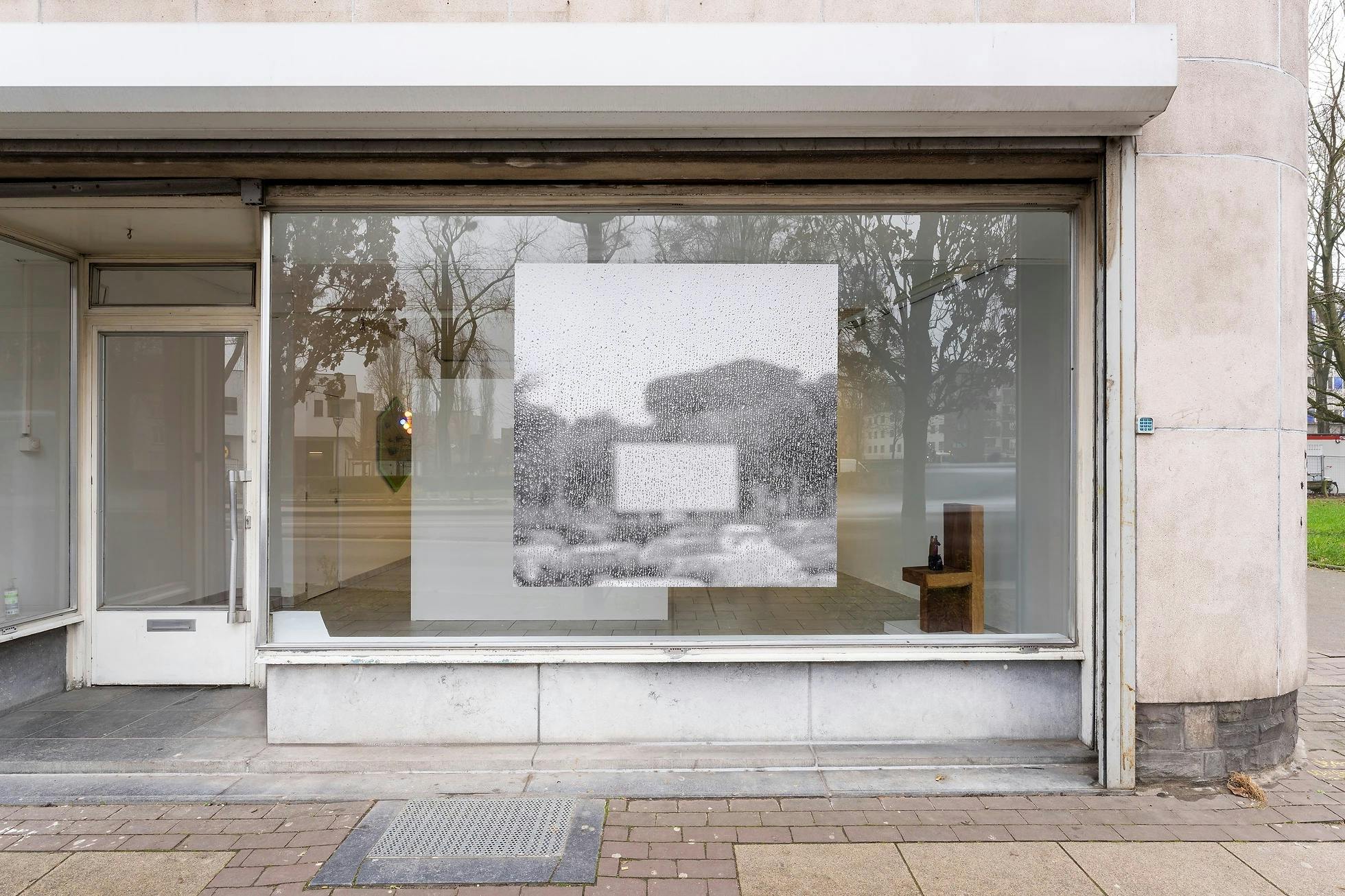
Komplot’s organisation may be nomadic, but that doesn’t necessarily make it easier to deal with the vicissitudes of Brussels' housing market. When I talked to Persyn, he expressed disappointment that Komplot would soon be forced to move. After three years in Anderlecht, they had just begun building strong ties with the community, he said. The news that the building would soon be reconverted back into a commercial property was frustrating. He emphasised the need for a stronger network of artist-run spaces in Brussels but saw this as going hand in hand with the cultivation of a ‘sustainability from within’, meaning organisations also have to be able to fend for themselves financially.
Globe Aroma – Art for all
Having heard the experiences of small-scale spaces like Komplot, I was curious how somewhat larger institutions were dealing with similar issues. As night fell, we arrived at the final destination of our tour: Globe Aroma, in the Rue de la Braie.
Created in 2002 in response to the lack of studios and exhibition spaces available to artists with a newcomer-background (including those seeking asylum), Globe Aroma (GA) has since grown into a vibrant community, finding new ways to expand its infrastructure. Its core remains a three-pronged programme comprising artist residencies, ‘co-creation’ projects and cultural excursions for members of its community. By acting as a mediator between larger institutions and groups that, historically, have found themselves excluded from them, GA serves a vital disruptor of gatekeeping mechanisms in the art world.
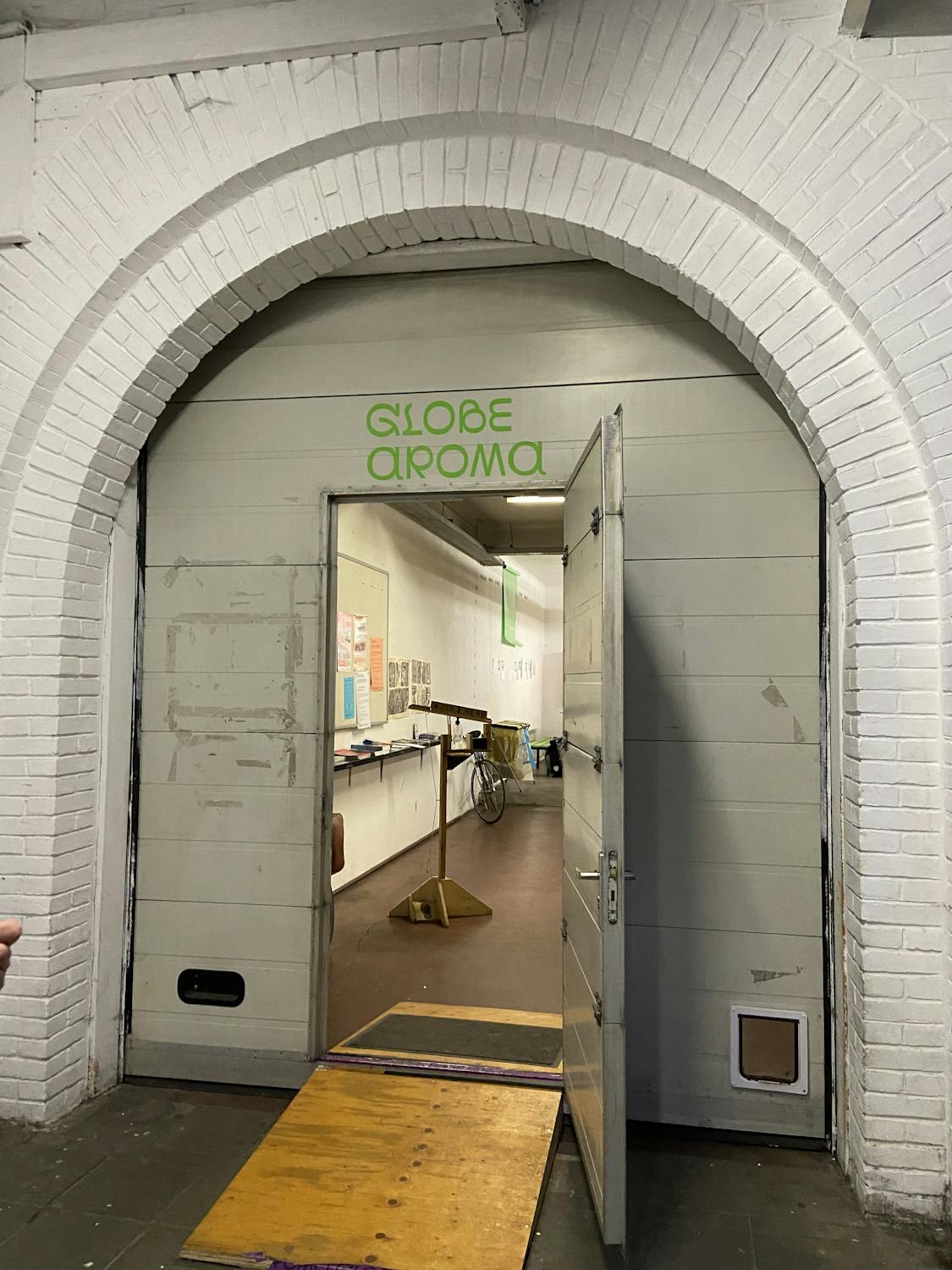
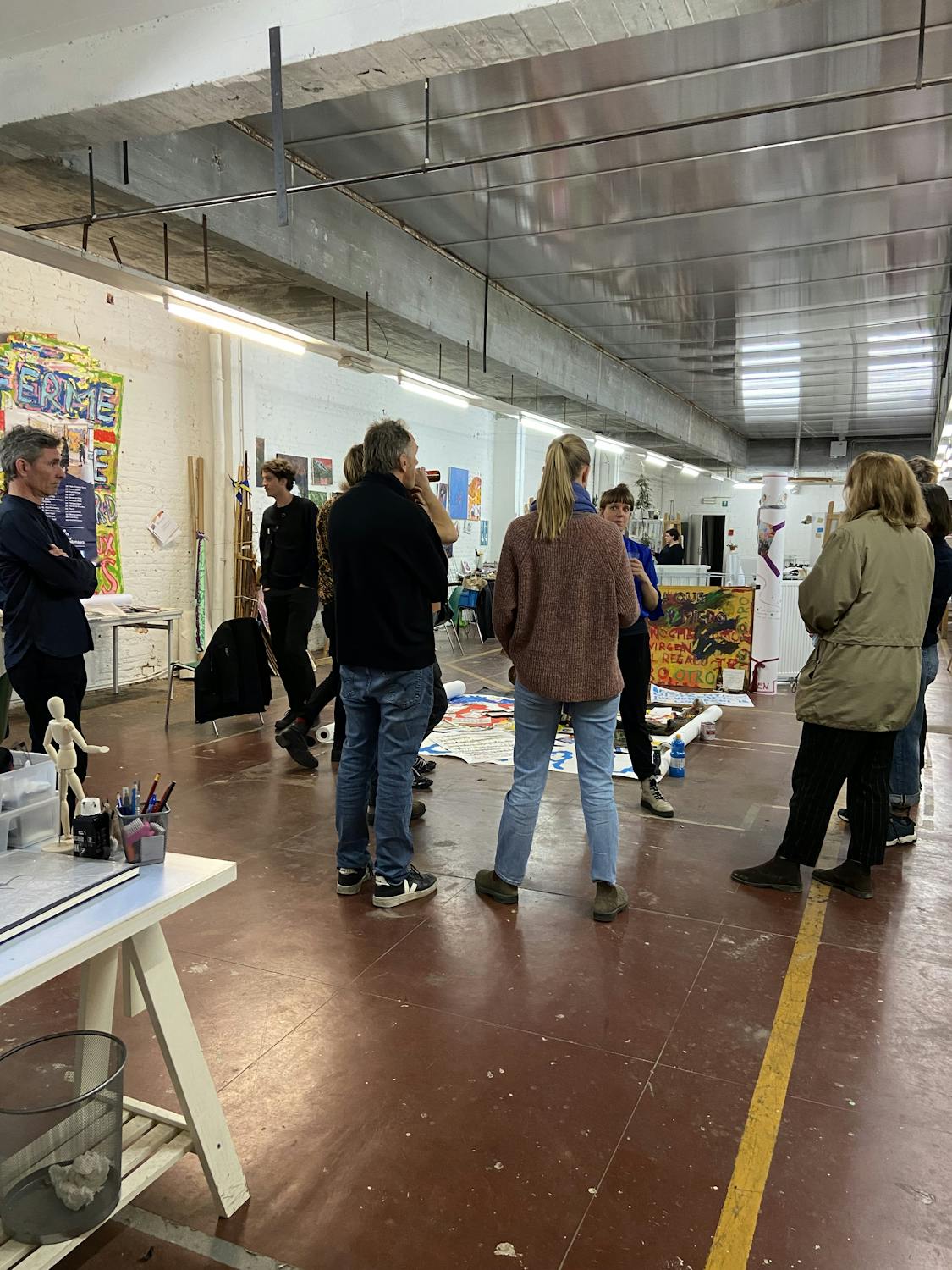
It’s all part of the organisation’s efforts to develop an ‘affective infrastructure’ geared towards meeting the emotional, mental and social needs of emerging artists. This commitment sets it apart from many similar institutions in the region, but it’s a role that GB shouldn’t have to fill alone. In a conversation with An Vandermeulen, artistic coordinator at Globe Aroma, we discussed the meaning of participation within the sector. What I took away was that, for her, the exchange can never be one-way. Instead, she argued for reciprocity: the established art field also needs to participate in the practices being developed at spaces like GA.
Solidarity
By the end of the trip, I was convinced. These artist-centred spaces in Brussels are worth fighting for. They fulfil a role that neither big cultural institutions nor smaller, more autonomous off-spaces can fill, by functioning as the missing link between artists and the larger art-world circuit. In the words of HART-contributor Pieter Vermeulen, such spaces 'serve as catalysts for cultural diversity and heterogeneity’, enriching the cultural ecosystem. Suppose the remaining strongholds of this underlying infrastructure disappear. In that case, the whole sector will be thrown off-balance (hence the short-sightedness of Minister of Education Ben Weyts' proposal to pull funding from the HISK and a.pass, in Gent and Brussels, respectively).
Of the artist-run spaces I interviewed, most of them expressed a desire to get organised, pool resources, exchange knowledge – to begin, in earnest, the project of ‘listening and talking to one another’. For some, this took the form of an ‘overarching body’ capable of uniting different organisations across Flanders and Brussels (like UFO). It was also the driving force behind Komplot’s efforts to bridge the language barrier in Brussels by setting up collaborations between Flemish- and French-speaking communities of artists.
The biggest problem remains one of policy. As Vermeulen reminds us, ‘[t]he sustainable development of off-spaces is difficult to separate from other hot topics ranging from fair pay for artists and working conditions to government subsidies and real estate policy... It’s up to politicians to create a socio-economic and financial framework within which artists' initiatives can continue to develop in a sustainable way.’ The question remains, how do we effect this change on a political level? Like the team of nadine told me, one thing is certain – ‘the future is collective’. We may not be there yet, but things are moving. The UFO programme was an encouraging sign. In the meantime, policymakers would do well to remember that oft-repeated slogan, now resounding from all corners of the art world: ‘without artists, no art’.
Works cited:
Thomas Peeters, ‘Een op de vier cultuurhuizen kan subsidies verliezen’, De Tijd, 6 april 2022
Pieter Vermeulen, ‘Vrijbuiters, lappendekens en paddestoelen’, Kunstenpunt, 22 juni 2020
Freely translated by the author.
Places:
nadine, Brussel
www.nadine.be
rile*, Brussel
www.rile.space
Komplot, Brussel
www.kmplt.org
Globe Aroma, Brussel
www.globearoma.be
Level Five, Brussel
www.levelfive.brussels
Klik hier voor de Nederlandstalige versie van dit artikel.